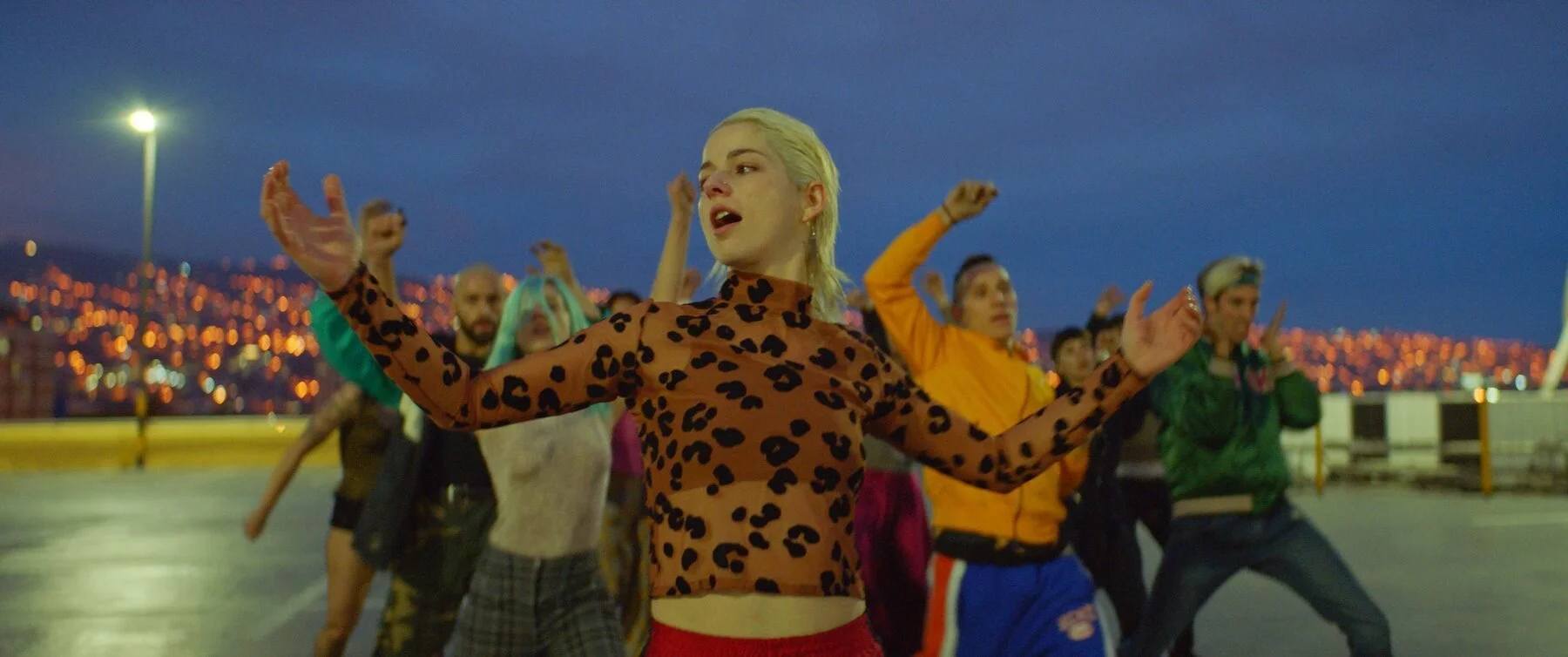Film Review: Ema
Mariana di Girolamo as the eponymous Ema.
Pablo Larrain’s latest film Ema pulsates with an unrelenting energy that utilises street dance as a liberating escape from psychological and patriarchal imprisonment.
Set in the neon-soaked city of Valparaiso in Chile, platinum-haired Ema (Mariana di Girolamo) is the lead dancer in her husband Gaston’s (Gael Garcia Bernal) dance company. The film begins at an ethical juncture whereby the couple have adopted a young child, Polo, as they are unable to conceive of their own. However, Polo’s violent and incendiary predilections lead to him burning their house, as well as half the face of Ema’s sister. As a result, the couple are bereft and unable to cope, so they decide to put Polo send the child back up for adoption.
A chasm in their relationship emerges; as Ema’s eviscerating insults to Gaston such as “infertile pig” and “human condom” set the scene for wild and indulgent behaviours that breaks the chain of her motherhood and gender expectations.
At this stage, the film’s kaleidoscopic style takes precedence, with fire as a prominent symbol for breaking societal and moral boundaries. Under Gaston’s direction, the dance troupe initially perform as silhouettes in front of a projection of a crackling sun threatening to explode. However, Ema leads a revolt with her fellow dancers away from the stifling and melancholic rhythms of Gaston’s choreography, to the streets, where they move their bodies with sexually-charged freedom to synthesised Reggaeton. In doing so, Ema becomes an agent of chaos as she procures a flamethrower and ravenously sets the city ablaze, transgressing the Promethean notion of playing with fire, while also pursuing affairs with both male and female lovers.
Di Girolamo’s performance personifies the miasmic chaos that is the eponymous Ema. With an androgynous appearance of cropped hair, and often wearing baggy tracksuits, she explodes concepts of gender conformity. Notably, she seldom reveals her feelings explicitly, only expressing her emotions through dancing, claiming proudly at an interview for a dance teaching job “I teach freedom”. In a calculating turn, she simultaneously seduces her middle-aged divorce lawyer Raquel, and her Raquel’s fireman husband Anibal, who have since adopted Polo. In this way, she knowingly and irreparably disrupts not only her own family dynamic, but theirs as well. While the film’s rich style drips with a vivid colour palette, a notable shift takes place whereby dancing and orgiastic parties become intertwined through editing, with the liberating mood irrepressible.
Ema unveils itself as a political statement through the microcosm of its titular character. However, it’s crowning achievement is the immersive kinetic energy created from the phenomenal dance choreography, pumping soundtrack and beautiful cinematography.
3.5/5 stars
Ema is showing in select Australian cinemas from Thursday 13th of June.

